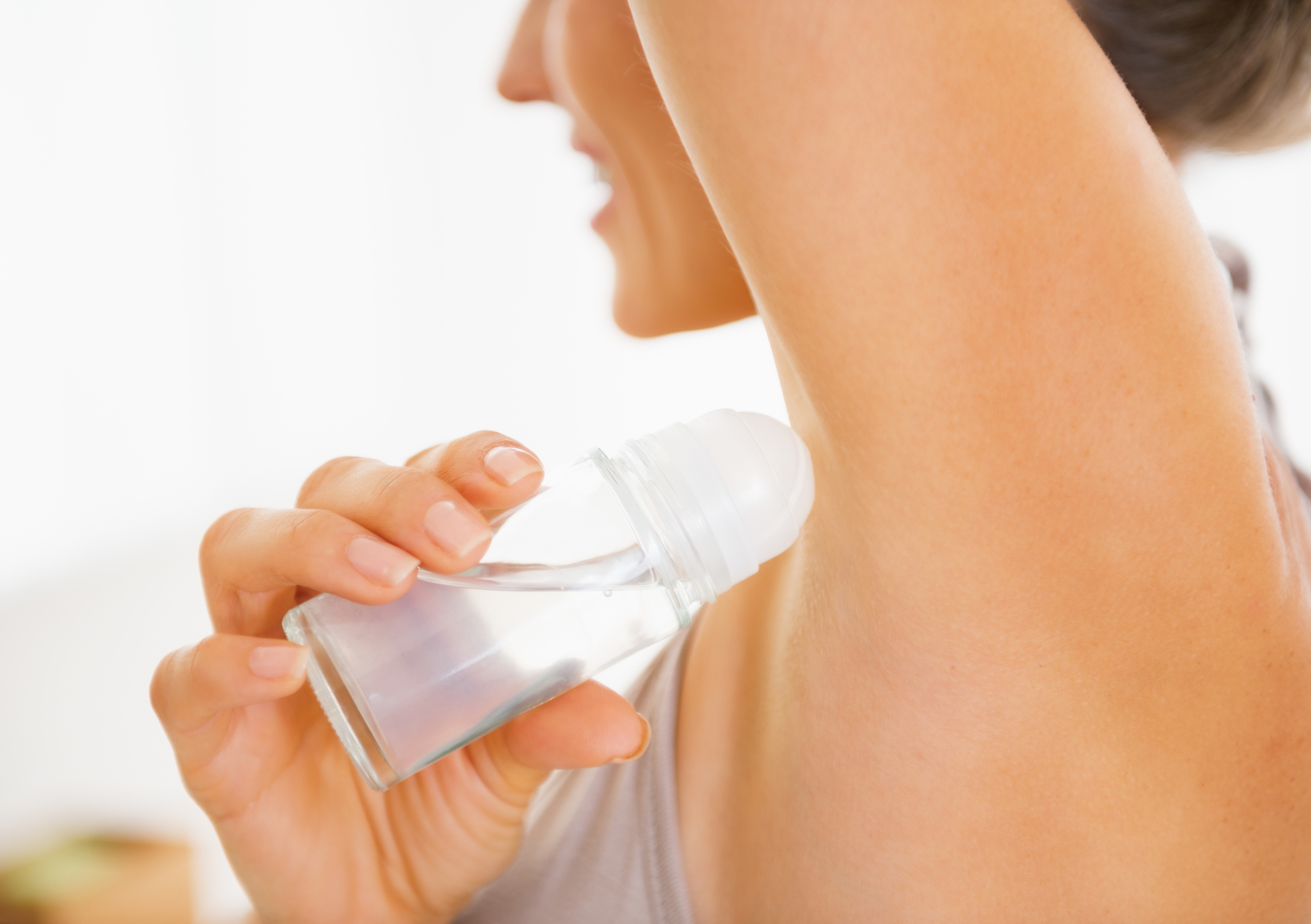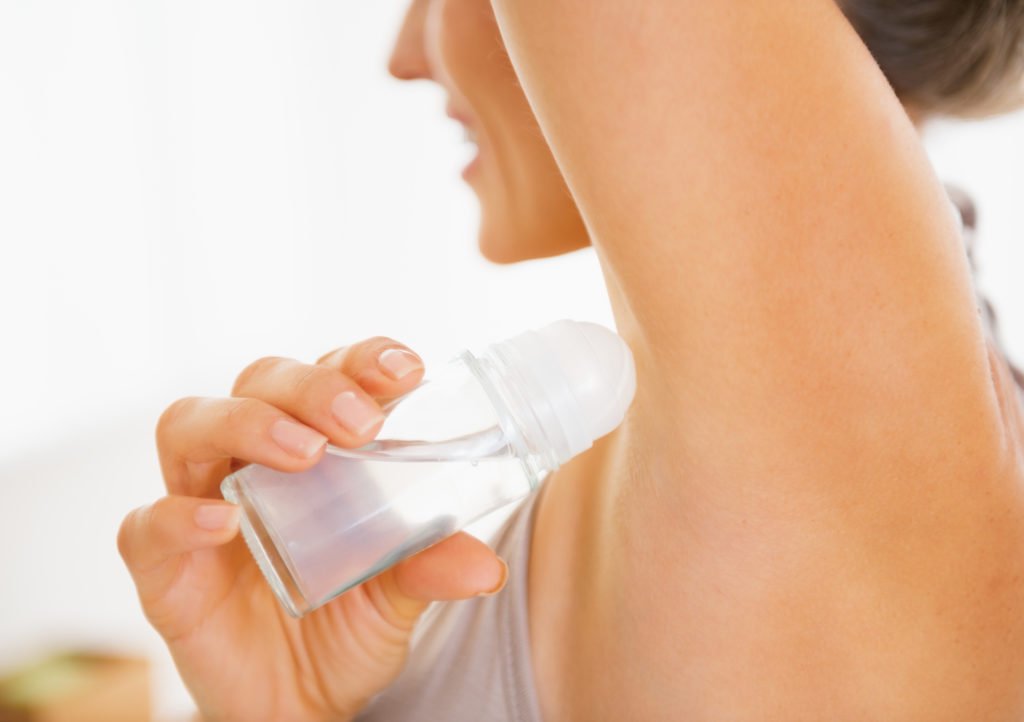
Antiperspirants Exposed: 8 Toxins in Your Deodorant & Natural Alternatives
Inside This Post: 8 toxins lurking in your deodorant and natural, clean and safe aluminum free deodorant choices that ditch the harsh chemicals and keep you safe.
This post may contain affiliate links. You can see my disclosure policy here.
TOXINS HIDING IN YOUR DEODORANT
Everyday we’re exposed to thousands of toxins and chemicals in our home, schools and workplace.
With over 70,000 chemical ingredients, many of them suspected carcinogens with harmful effects to the human body in adults, and especially to kids because of this disproportionate quantity based on their size, it’s hard to weed through what’s safe and what’s not these days.
That’s why I’ve done the work for you.
One of the most harmful chemicals that both men and women put on their bodies every day is deodorant and antiperspirant, but it’s also a simple switch to find something natural and non-toxic.
Everybody sweats because it’s the body’s way to regulate your body temperature, so you don’t overheat.
Some people sweat too much (armpit stains and soaked shirts) and this is where they think antiperspirant is the miracle fix.
Antiperspirant contains an active ingredient called aluminum, which dissolves onto your skin’s surface to form a gel. The gel temporarily plugs your apocrine sweat glands to reduce sweating.
Body odor happens when bacteria mixes with sweat, causing a bad smell. This is where deodorant comes in. Deodorant only prevents body odor, it doesn’t control or stop the sweating. They’re mostly alcohol-based, made of compounds like sodium chloride and stearyl alcohol.
The problem?
When deodorant and antiperspirant are used to clog the apocrine sweat glands and hair follicles, you may not realize you’re pushing harmful chemicals in our bodies and bloodstream.

A SHORT HISTORY OF ANTIPERSPIRANTS
Deodorant and antiperspirant have been used for thousands of years in various forms.
In Egyptian pharaoh tombs, aluminum crystals, a crude, raw type of antiperspirant, were discovered.
The first modern antiperspirant was Everdry. Launched in 1903, Everdry used aluminum salt to block pores and stop sweating, but early versions caused skin irritation and didn’t catch on with the masses.
Then, a surgeon invented a liquid antiperspirant to keep his hands from sweating while operating. His daughter tried it under her arms and eliminated body odor and sweat. She started selling it, marking the beginning of the antiperspirant we know today.
8 TERRIBLE TOXINS IN ANTIPERSPIRANTS
The most common chemical ingredients found in deodorant and antiperspirants are parabens, triclosan, phthalates, propylene glycol and aluminum.
Research has linked these ingredients to several medical conditions including types of cancer and reproductive development issues. However, while toxins in antiperspirants have been the subject of many research studies, results have been inconsistent.
But why do oncologists always tell patients who have been diagnosed with cancer to ditch their deodorant and antiperspirants an instead opt for an aluminum-free version?
Here’s what the research says on some of the top toxins in antiperspirants:
1) ALUMINUM:
Aluminum is the active ingredient in antiperspirant. When it’s applied, it dissolve onto the skin, forming a gel that temporarily plugs your apocrine sweat glands to prevent sweating.
Aluminum has been linked to Alzheimer’s, breast cancer and interferes with estrogen levels (When your body can’t process estrogen properly, there’s a higher risk for breast and prostrate cancer.)
2) PARABENS:
Parabens are used in many deodorants in personal care products. This is an endocrine disruptor, a chemical that may interfere with the body’s endocrine (hormone and cell signaling) system and produce adverse developmental, reproductive, neurological, and immune effects.
One 2004 study found parabens in 18 of 20 breast cancer patients, the study did not prove parabens caused the cancer. But 18 of 20 is a fairly high percentage if you ask me.
Most major U.S. brands of deodorants and antiperspirants have phased out parabens, but you should always check for their presence and purchase paraben-free products.
3) TRICLOSAN:
Triclosan is a pesticide used to reduce or prevent bacterial contamination.
Since the purpose of deodorant is to combat body odor and bacteria, many consumer brands add this pesticide to kill bacteria. If that’s not bad enough, the combination of water and triclosan can create the carcinogenic gas chloroform.
In studies on animals, triclosan has been shown to alter hormone regulation. Studies on bacteria also suggest that triclosan may contribute to making bacteria resistant to antibiotics, but no conclusive data exists.
4) PHTHALATES:
Phthalates are chemicals used to soften plastics and help scents and chemicals bind together.
They are found in a wide variety of products, including deodorants, shampoos, conditioners, body sprays, hair sprays, perfumes, colognes, soap, nail polish, shower curtains, medical tubing, IV bags, vinyl flooring and wall coverings, food packaging and coatings on time-release pharmaceuticals.
They’ve been linked asthma, ADHD, breast cancer, obesity, autism spectrum disorders, altered reproductive development, male fertility issues and many more problems.
Exposure to phthalates has been associated with lower IQ levels.
Fortunately, as with BPA, if exposure is decreased, phthalates quickly exit the body.
5) PROPYLENE GLYCOL:
If used everyday, this chemical can cause damage to your central nervous system, heart and liver. It is also shown to irritate skin, especially if you have sensitive skin.
Used in foods and consumer products, propylene is also in antifreeze and the EPA’s stringent safety disclosure instructions require gloves when handling it and disposal via burying.
Propylene glycol can be harmful at as small a percentage as 2%, yet deodorants generally have a high dose of 50% propylene glycol.
6) STEARETHS
Steareths, the additive product of ethoxylation (weakening of harsh chemical in the manufacturing process), which simultaneously produces carcinogens and dioxanes.
7) TEA & DEA:
Triethanolamine (TEA) and diethanolamine (DEA) are chemicals can seep into your skin and affect your liver and kidneys. They’re so harmful that these two chemicals have already been banned from products in Europe because they are known carcinogens.
8) ARTIFICIAL COLORS:
Some artificial colors and harsh bleaches in deodorants can cause allergic reactions and are also known carcinogens.
FINDING TOXIN FREE & SAFE OPTIONS
I use the Think Dirty app and check out the Environmental Working Group’s (EWG) Skin Deep Database to look up ingredients and other chemicals in antiperspirants and deodorants as a precaution before buying (anything.)
Don’t just rely on products that say they’re “natural” or “green,” you have to do your homework. Labels don’t always disclose every ingredient in your antiperspirant or deodorant, but the Think Dirty app or Household Products Database can provide more insight.
Here are my three favorite choices (I’ve tried a ton looking for the best and cleanest option out there and had no irritation, no itching or odor after a long day.)
- Truly’s All Natural Long Lasting All Day Deodorant – it is a paste that you have to apply with your fingers but it smells like coconut, and it really does last all day long. I don’t notice odor or any irritation at all, like some other toxin free options I’ve tested.
- Purely Great Cream Deodorant – another cream deodorant but it works all day and I don’t mind the cream once I put it on.
- Native Unearthed Natural Deodorant – it only has two ingredients: coconut oil and vanilla and smells so, so good.
FREEBIE ALERT
To gain a full understanding of what harsh toxins are lurking in your home and what happens when you breathe, eat, touch or smell them, Download Your Free Starter Guide to Environmental Toxins Hiding in Your Home